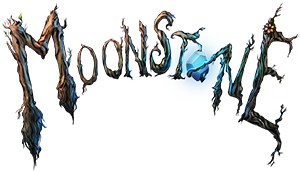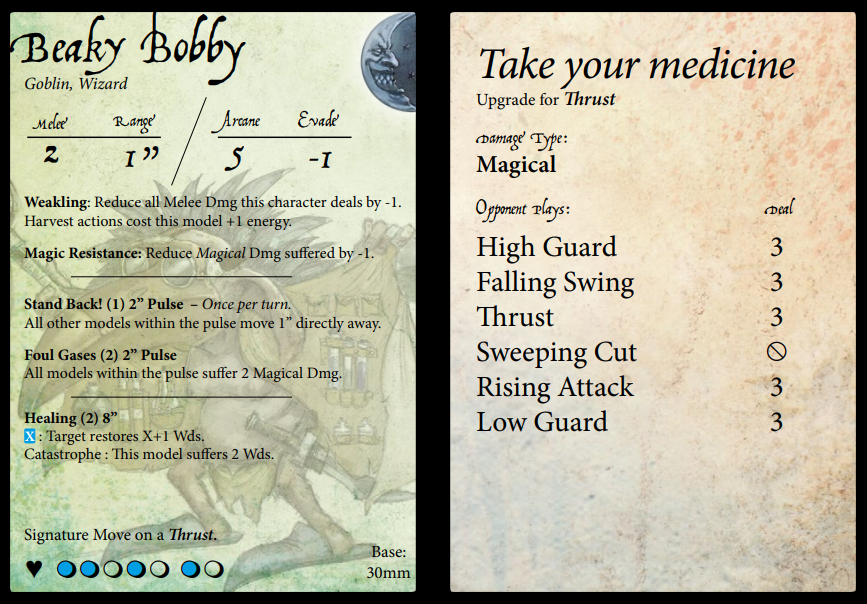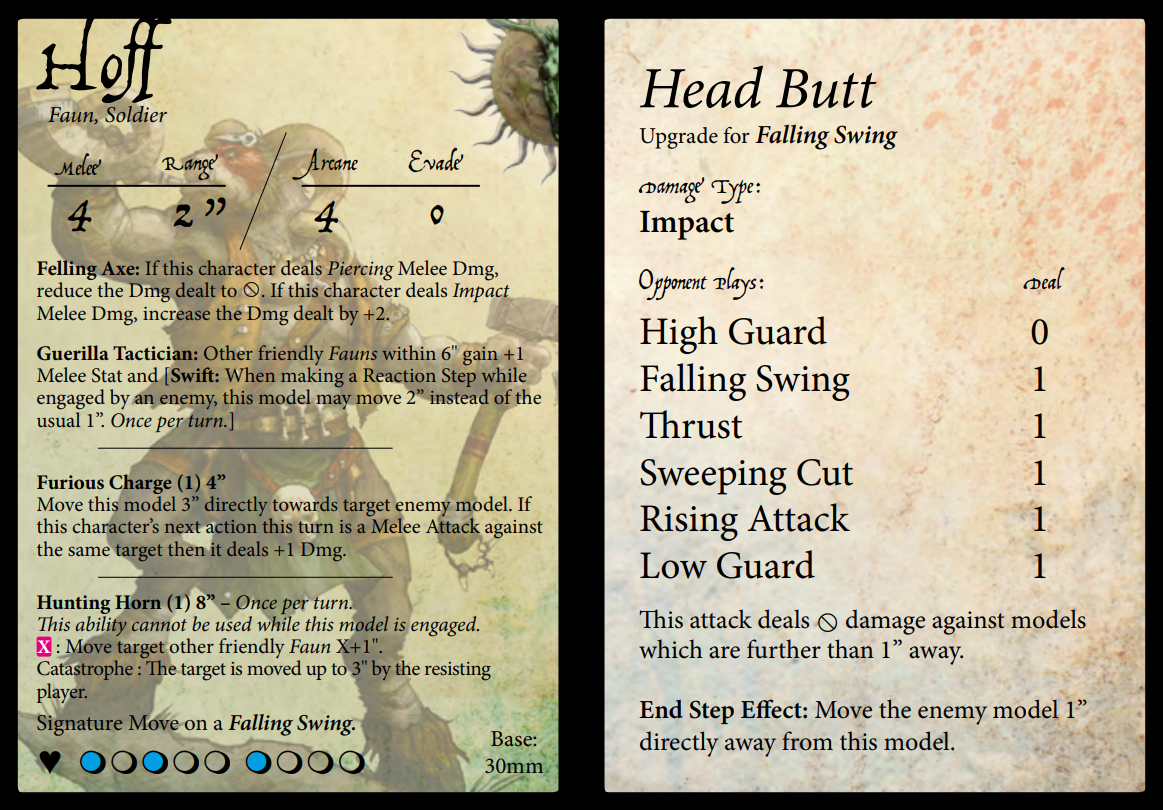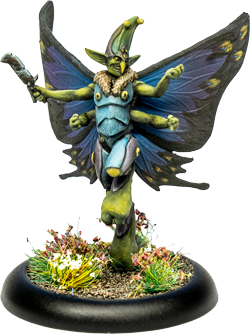Starting Moonstone: Troupe Building
Only the bravest or most foolhardy individuals gather together to brave the Tauberian night on Moonstone hunts, and these individuals can vary from street rats to bold knights, faerie rogues to exiled nobles. Many have become experts in Moonstone collection, and can summon groups around them on reputation alone. Over the years these bands of intrepid hunters have become known as ‘Troupes’, and their exploits and adventures are celebrated across Tauber in tap-room tales and minstrels songs.
The Basics
The small warband controlled by each player in a game of Moonstone is called a Troupe. Troupe building can be as simple as taking two box sets from the same faction and dropping them on the table (not literally, save that for the stones) or you can pick and choose models from across many different sets to customise your own unique strategies.
The first step of creating a troupe is to decide on how big the game you'll be playing is. There is no ‘point system’ in Moonstone; the size of the game is determined purely on the number of models used.
Step 1: Choose game size
4 models each for a beginner game,
5 models each for a fast game, or
6 models each for a full sized game.
Step 2: Each player chooses a faction
Commonwealth (the yellow sun symbol),
Dominion (the blue moon symbol),
Leshavult (the green stags skull symbol), or
Shades (the grey warriors skull symbol).
Step 3: Select the characters for your troupe
They must all belonging to your chosen faction.
Faction is determined by the symbol in the top right.
A model with a mixed symbol can be recruited by either faction represented.
Mechanically, that’s it for building troupes! All Moonstone troupe sets contain 3 models who work well together, so buy two troupe sets from the same faction and you are good to go: Choose game size, choose faction, choose characters and you're done! Next is just a few general pointers on good models to include in your troupe when choosing them.
Healers
There aren't really any auto-include models in Moonstone, however, there is one type of character which is generally a good idea for all troupes: A healer. With a healer, your troupe will be able to keep its key models alive and topped off with enough wounds to let them generate all the energy they need. As for which healer to use, either your favourite one, or something that synergises with the rest of your troupe is usually a good idea. Speaking of synergies...
Keyword ‘Heroes’
Some models are just begging you to build your troupe around them, focussing on supporting other characters with a specific keyword (you’ll find keywords just below each character’s name on their card). Therefore, if you are building a themed list based around a given keyword, it's well worth considering these characters. Some examples are:
Eric the Squire - Nobles
Brunhilde - Giants
Hoff - Fauns
Mama Gimble - Gnomes
Muridae - Rogues
Sir Guillemot Poppycock - Soldiers
Knoll - Trolls
El Capitano - Goblin Pirates
The Goblin King - Goblins
Kalista, Leshavult Priestess - Cultists and Spirits
With a character like this thrown into a keyword themed troupe, you can produce a very synergistic troupe. Some of these characters, such as Kalista and Mama Gimble, even have healing abilities and so can fulfil the role of a healer too.
Season to taste…
But what else is good to fill your troupe out with? It's usually a good idea to have at least one character who is good at harvesting moonstones, and a couple of characters who can deal lethal damage. Often flimsy crews will include a character that can soak up enemy attacks and slow their advance, or perhaps a character that is able to force an opponet to drop their moonstones to steal a late victory. You can also pick models based on your previous choices to layer up synergies, such as using more fauns if you have Hoff. But, most importantly, the best way to fill out your troupe is with characters you like! Most choices are down to personal preferences and a model someone never uses might be your favourite by comparison. You just have to try out as much as possible to find out what works best for you to build your ideal troupe!
Troupe building example: Mick’s Faerie Firefight list
Mick and Tom are going to play each other tonight, they’ve agreed a 6 model game, and Mick knows Tom is going to be fielding Commonwealth, whilst Mick has declared Dominion. Mick wants to lean into the Faerie subfaction for this game. He knows that the commonwealth’s aggressive play style means trying to take them on in a fair fight will be a struggle, so he intends to make it as unfair as possible.
He starts with Diana, the Faerie Queen. She’s a hard hitting spellcaster that can sap enemy energy and will ignore any armour the Commonwealth bring, one of their most common abilities.
Next he adds Fraya, an amazing healer, she’ll be useful keeping the faeries Diana stabs alive and fighting. She also has some nasty ranged attacks if she gets an opportunity.
Foxglove is Mick’s third choice. This rogue has the biggest damage attack spell in the Faeries and adds some defensive tech to this aggressive Faerie ranged list.
Sorted for ranged damage and healing, it’s time to consider a front line. Wasp is surprisingly tanky for a faerie and can remove weakling from his kin to turn them into strong Moonstone harvesters.
Herbert Growbottom is Mick’s fifth choice. With a host of abilities from creating wooded patches to hide the faerie wizards, to teleporting and blasting, he’s a solid all-rounder who crucially isn’t a weakling (important for harvesting).
The final character Mick chooses for this Troupe is the only non-Faerie. Gotchgut the mercenary giant can protect Diana and provide melee heft .
With these six characters, Mick has chosen a pretty aggressive Faerie troupe. Everybody except Gotchgut has a ranged attack. With no aura buffs in the troupe he can afford to spread out and take advantage of cover and moonstone drops, and between Gotchgut and Wasp there’s enough melee threat to keep enemy harvesters on their toes. Mick also has two tricksters in the troupe, giving him bluffing tricks that can make a huge difference if the game gets tight.
The basic game plan is to use Herbert’s wooded patches to block enemy movement and allow the Faerie wizards to blast from relative safety, whilst the harvesters grab moonstones and retreat back behind the firing line using energy to step as much as possible. Gotchgut keeps close to Diana for bodyguard, and can move in to engage any hard hitting enemies (like Fancyhat or Hogswash) that threaten to punch through.
As well as trying to play to Faeries strengths with this list, he’s also attempting to downplay the strengths of the Commonwealth. Their melee superiority won’t help against a barrage of fizzle-pops and javelins, and by refusing to engage up close most of the Commonwealths nastiest tricks hopefully won’t get into play. Of course, no plan of Mick’s tends to survive past the first turn, so we’ll have to see…
Where to go next: Decision time!
With so many keywords and troupes now available to play in game, there's a huge variety of choice for someone deciding who to pick up as their first faction, let alone their first troupe. With this in mind we’ve created some overviews of the most common keyword troupes in the game. So if you're wondering where to start or if you fancy trying something new to play, check one of the icons below for a swift overview of the most common troupe archetypes in each faction!
We’ve given each archetype a difficulty to play rating, a 1-5 star rating on several stats, a one sentence description based on how they'll play, and the box sets you’ll need to get started!
“I have the largest personal army in the whole of Tauber, so how can that cursed goblin on that ugly dog get in and out of my land unseen? Hmm? Calders, choose the finest soldiers and put an end to that goblin once and for all!”
- Sir Guillemot Poppycock















